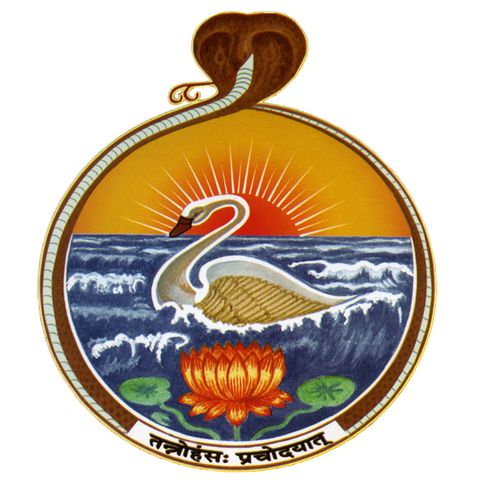80 – Omkara Upasana | Swami Tattwamayananda

Download and listen anywhere
Download your favorite episodes and enjoy them, wherever you are! Sign up or log in now to access offline listening.
Description
-8th chapter: verses 10, 11, 12, 13, 14 -The lecture was given by Swami Tattwamayananda on April 30, 2021. -Verses 10-14 provide a detailed description of meditative practices and the...
show more-The lecture was given by Swami Tattwamayananda on April 30, 2021.
-Verses 10-14 provide a detailed description of meditative practices and the importance of Omkara upasana.
-Mandukya Upanishad elaborately discusses Omkara as a spiritual symbol. It says that if one is spiritually fit, and his mind is fully ready to realize the identity with Brahman, then upon hearing this expression, immediately he will realize its true meaning (Shabda-aparoksha-vada). Others will take more time for such realization and will have to pursue spiritual practices.
-Omkara is the best tool for meditation on the transcendental, all-pervading, attribute-less, impersonal, immanent Reality. When we meditate on a deity, we use a mantra connected to that deity. To meditate on the Absolute Reality, we use Omkara upasana.
-Omkara should be chanted with a lengthened vowel sound. It begins and ends in silence. Its chanting gives us inner tranquility and peace.
-As an abstract symbol, Omkara takes us to the realization of the most abstract spiritual truth. As a practice, it represents the totality and oneness of existence. It is universal, as it can be added to any religious practice.
-10th verse: “At the time of death, with full of devotion and steadfast mind, and with the power of Yoga if a person fixes his prana between the eyebrows, then he attains the highest spiritual realization.”
-Yoga has two meanings. First, it is an expression of the unity of the individual soul with the universal soul. Second, it means samadhi, when one has transcended all vrittis, and his mind is fixed on one thought.
-When we meditate, distracting thought currents can emerge. With constant practice, if one can meditate without any distraction, it is called Abhyasa. Shankaracharya says that we should combine Yoga and Abhyasa – so that we can meditate on one ideal without any distracting thought currents.
-11th verse: “This spiritual truth - that knowers and Vedic scholars call Aksharam, that great monks become one with, to gain which they live the life of Brahmacharis – that I am going to explain to you.”
-12th and 13th verses explain how a person can cast away the body and transcend the cycle of life and death. First, he should restrain the door openings that drag the mind to external objects. Second, the mind should be fixed in hridaya. Third, uttering Omkara, and meditating on the Supreme Reality, he should depart the body. Then he attains the highest goal.
-Human body has door openings, such as the eyes, ears, nostrils, that drag our attention to external objects. When we restrain them through samyama, the mind won’t be dragged to external objects.
-Om is the word symbol of transcendental Reality. When we pray to a deity, we may get blessings, but we don’t transcend the cycle of birth and death. We transcend this cycle, when we meditate on the all-pervading, Supreme Reality with Omkara.
-Omkara is used in all mantras as a prefix to imply the transcendental Reality, even when invoking a deity. The sound of Omkara is what is universal, not the letter symbol. In puja, Omkara is used as mangala-vachaka (auspicious).
-Before undertaking spiritual practices, one should be established in yamas and niyamas.
-14th verse: “I am easily attainable by that Yogi, who remembers me constantly with an undistracted mind.”
Information
| Author | Vedanta Society, San Francisco |
| Organization | Vedanta Society, San Francisco |
| Website | - |
| Tags |
Copyright 2024 - Spreaker Inc. an iHeartMedia Company
